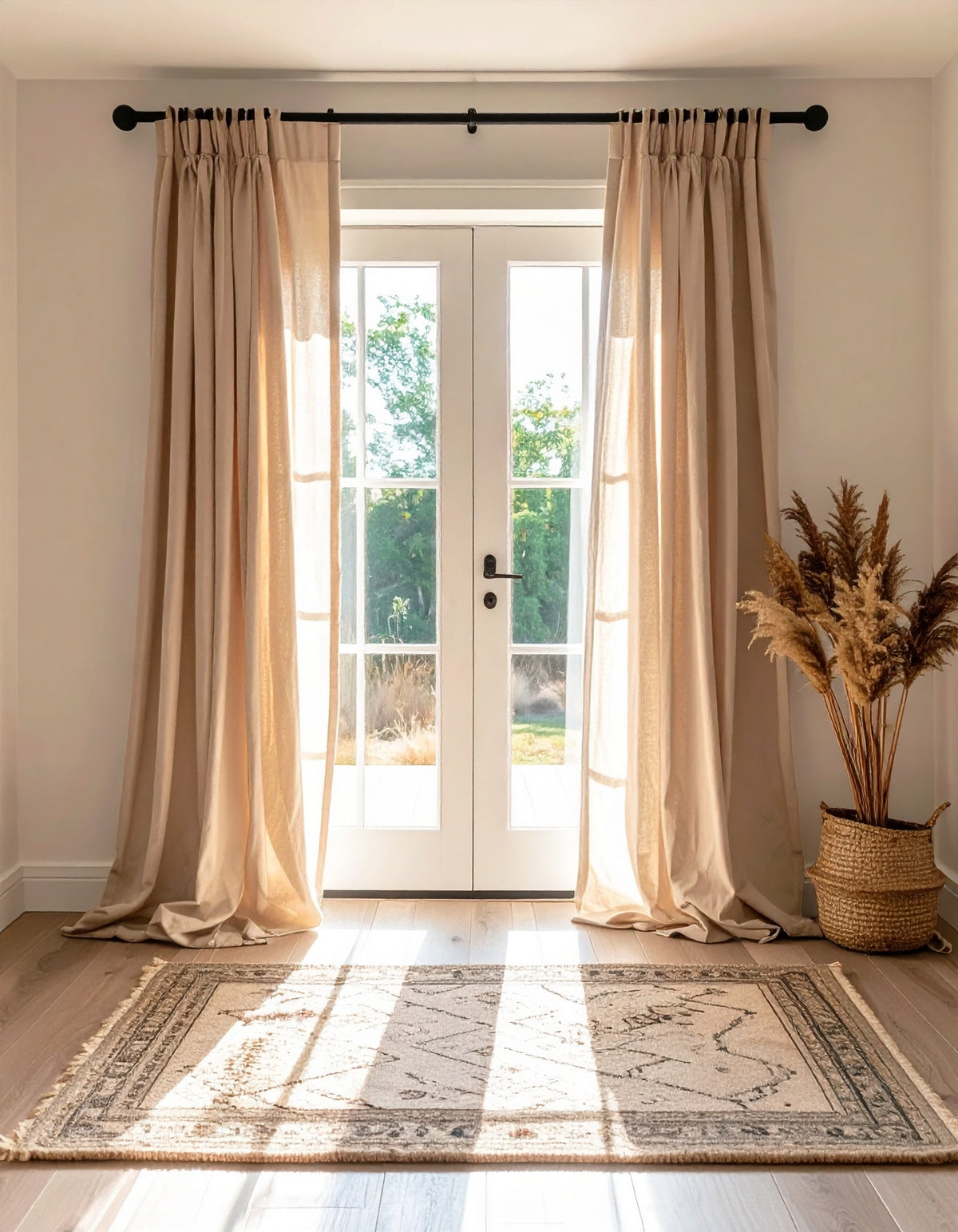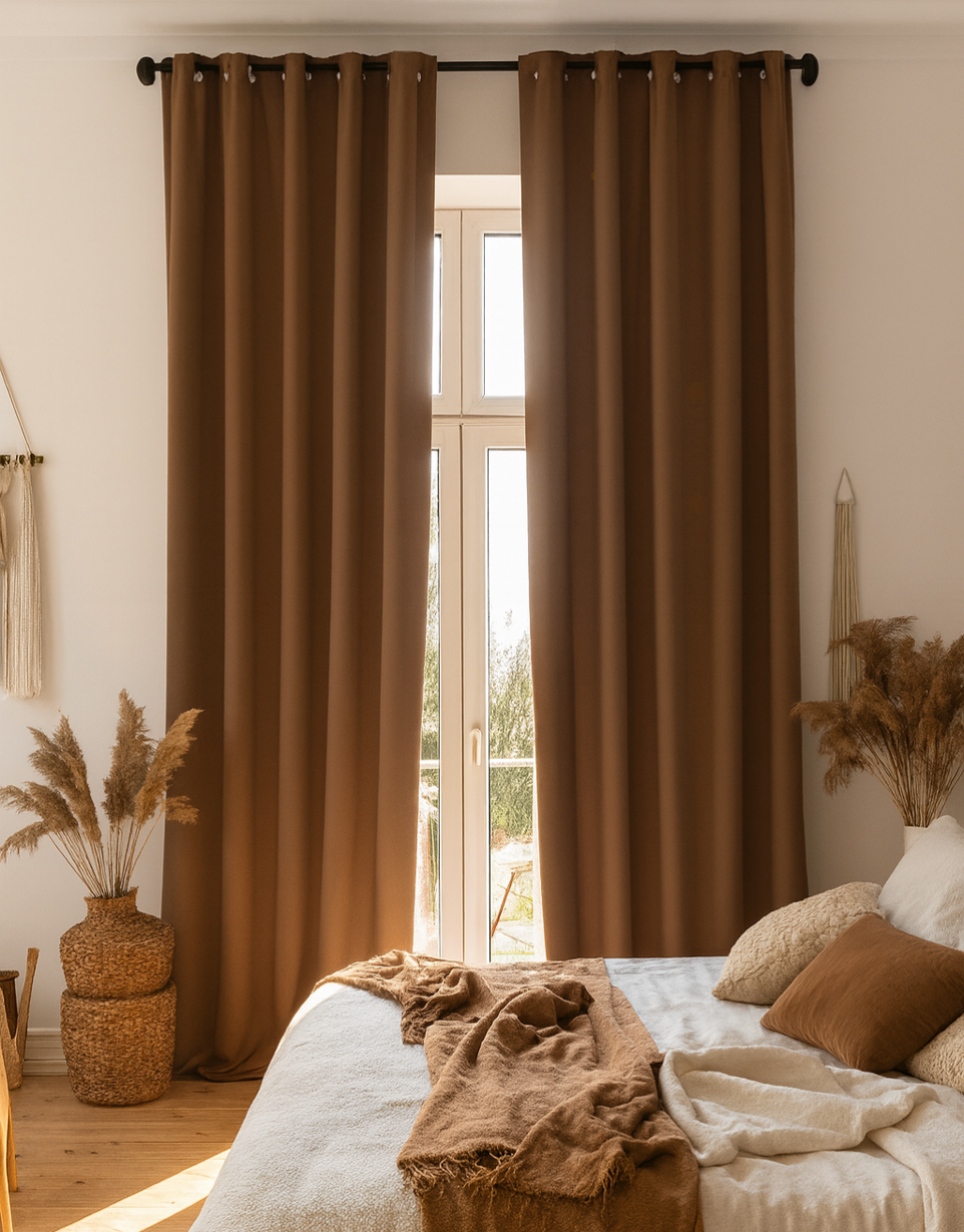The way we measure our windows shapes how our curtains will frame them and how our rooms will feel. A few simple steps can make the difference between curtains that look “just there” and curtains that feel thoughtfully placed, softening light and bringing balance to your space. With just a few steps, you prepare the canvas for fabric that softens daylight, warms evenings and turns windows into a part of your home.
Step 1: Measure Your Window or Door
Begin by deciding where to place your rod or track. For a more spacious look, mount it as close to the ceiling as possible. This draws the eye upward and gives your room a taller, airier feeling. To get the right measurement, start from the ceiling down to where you’d like the rod to sit (usually 5-10 inches above the window frame or flush with the ceiling).
Let the rod extend 6–15 inches beyond each side of the frame. The same applies if you already have a rod in place. This allows the curtains to close neatly without gaps and leaves enough space for stack back, which refers to the folds of fabric that rest at the edges when curtains are fully open.

Step 2: Determine the Curtain Panel Width
Curtains look best when they have fullness. Curtain fullness describes how much fabric is used compared to the width of the window (or rod/track). It’s what gives curtains their look. A simple guideline:
-
For flat tops (grommet, rod pocket, back tab, tab top), divide the total rod width (multiplied by your chosen fullness, usually 2x) by the number of panels.
-
For pleated styles (pinch pleat, euro pleat), divide the rod width evenly between panels. Pleats already carry natural fullness.
-
For ripple fold, divide the rod width by panel count, keeping in mind that the flowing bottom will be about twice as full as the top.
If you don’t yet have a rod, use the window width and add an extra 6–15 inches on each side to estimate the final width.
Step 3: Measuring the Height
Next, decide where you’d like your curtains to fall. Different lengths create different moods:
-
Just above the floor: Usually 1/2 inch above the floor. Feels neat and practical.
-
Kissing the floor: Floor length. Gives a timeless, tailored look.
-
Puddling: Curtains extend 2–4 inches beyond the floor. Best for decorative curtains, as frequent opening and closing can cause them to gather dust.
Measure from the top of your curtain rod or track to your chosen end point. Keep the tape straight for accuracy, and let the number guide you.











2 comments
4vfk3s
4vfk3s